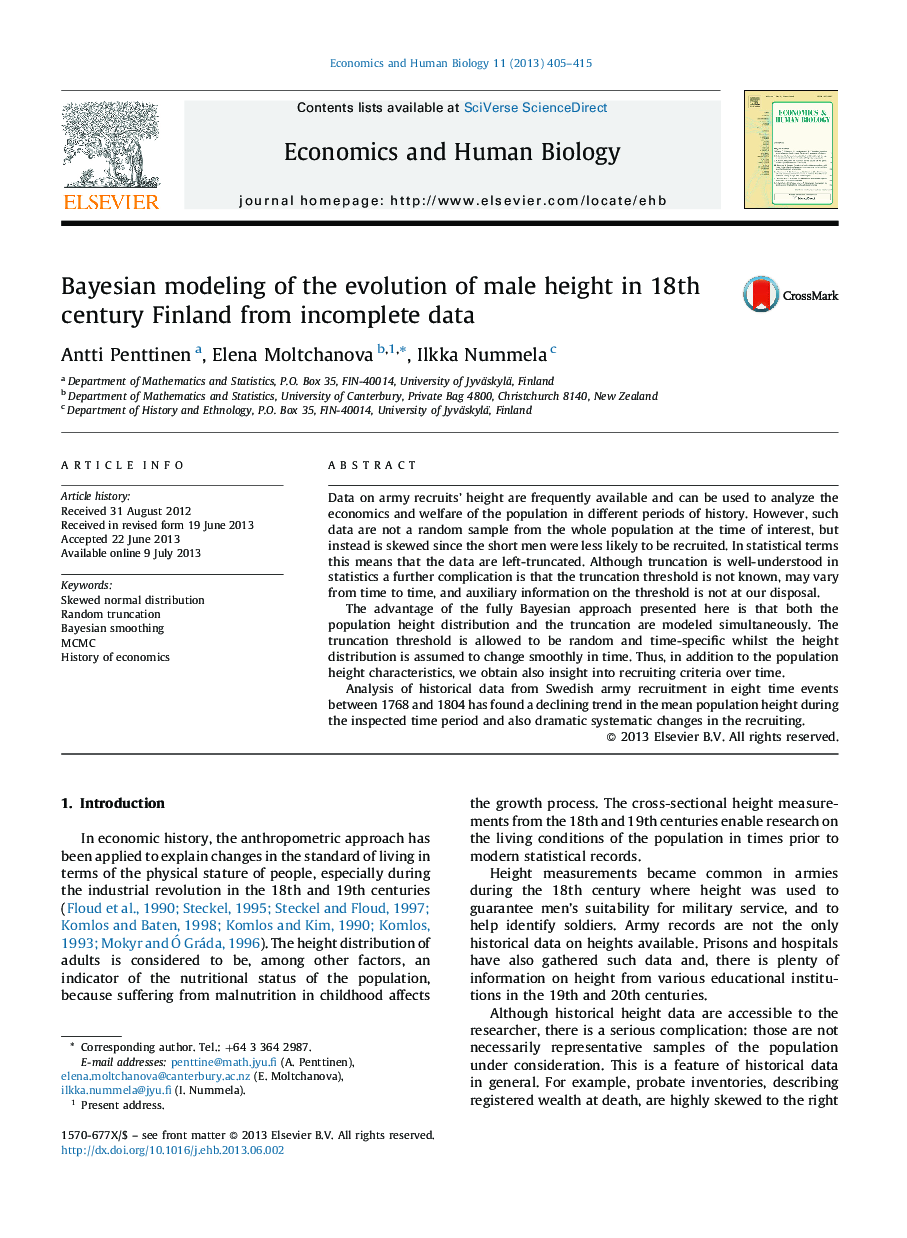| کد مقاله | کد نشریه | سال انتشار | مقاله انگلیسی | نسخه تمام متن |
|---|---|---|---|---|
| 5057095 | 1371701 | 2013 | 11 صفحه PDF | دانلود رایگان |

- The height distributions are left-truncated. The cut-off point varied with time.
- We estimate the height distribution for each available year.
- We also estimate the recruiting mechanism (the cut-off point) for each year.
- Bayesian approach allows to 'borrow statistical strength' from year to year.
Data on army recruits' height are frequently available and can be used to analyze the economics and welfare of the population in different periods of history. However, such data are not a random sample from the whole population at the time of interest, but instead is skewed since the short men were less likely to be recruited. In statistical terms this means that the data are left-truncated. Although truncation is well-understood in statistics a further complication is that the truncation threshold is not known, may vary from time to time, and auxiliary information on the threshold is not at our disposal.The advantage of the fully Bayesian approach presented here is that both the population height distribution and the truncation are modeled simultaneously. The truncation threshold is allowed to be random and time-specific whilst the height distribution is assumed to change smoothly in time. Thus, in addition to the population height characteristics, we obtain also insight into recruiting criteria over time.Analysis of historical data from Swedish army recruitment in eight time events between 1768 and 1804 has found a declining trend in the mean population height during the inspected time period and also dramatic systematic changes in the recruiting.
Journal: Economics & Human Biology - Volume 11, Issue 4, December 2013, Pages 405-415